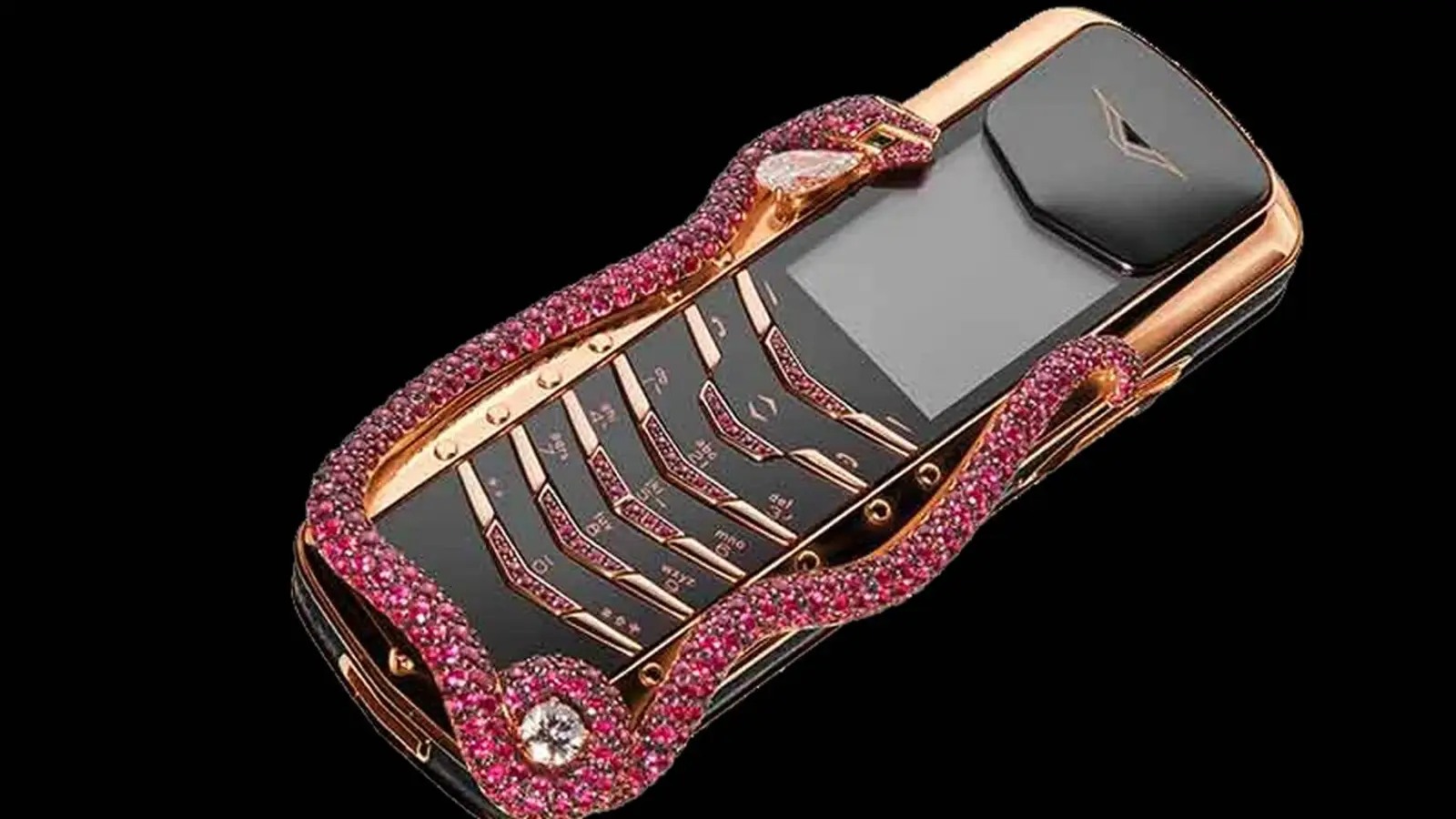The most expensive commercially released luxury phones
Explore the most expensive luxury phones, from Vertu and Gresso to Ulysse Nardin. Discover rare limited-edition diamond models and what makes them coveted.
Explore the most expensive luxury phones, from Vertu and Gresso to Ulysse Nardin. Discover rare limited-edition diamond models and what makes them coveted.

© Vertu
In mobile tech, a small circle of hand-built phones is prized less for processors and more for lavish execution and rarity. Record price tags usually go to one-off commissions — think diamond-studded iPhones by jeweler Stuart Hughes or the Falcon Supernova iPhone 6 Pink Diamond at $48.5 million. Here, the focus is on commercially available exclusives released in runs of at least 10 units — devices that also entered the record books as some of the most expensive phones ever sold.
Vertu, founded by Nokia, made its name on hand-assembled luxury phones. The costliest line was the Signature Diamond collection: just 200 units, with design by French jeweler Boucheron. These phones came in 18-karat white or yellow gold and platinum, with the entire front bezel paved with diamonds.
Among the standouts were the Vertu Signature Cobra and Signature Python, embellished with gold snake motifs set with precious stones. The Cobra featured a gold serpent coiling around the body, set with 439 rubies and emerald eyes. Prices climbed to $310,000 — and the limited run only amplified the allure. The blend of precious metals, jewelry-level finishing, and Vertu’s renowned service cemented Signature Diamond as one of the most prestigious phone series ever made.
In 2011, Russian maker Gresso introduced the Grand Premiere from its Avantgarde line — a gold phone for the most exacting lovers of excess. The monolithic body uses 150 grams of 18-karat gold, while the front and rear are framed with sapphire crystal totaling 138 carats.
A gold triangular accent completes the design, and each piece carries its engraved number on the back. The internals are modest (Symbian S40 platform, a 2 MP camera, Bluetooth), but this purchase is about owning a wearable showpiece. Priced around $50,000, the Grand Premiere was among the most expensive production phones of its day — a device you choose with your eyes rather than your spec sheet.
The distinctive Serenata, jointly developed by Bang & Olufsen and Samsung, also received an ultra-luxe treatment. The Serenata Diamond Edition was limited to 10 units. Its slider body was cast in pure 24-karat gold (about 140 grams) and adorned with diamonds totaling 16.25 carats.
The phone’s signature circular scroll wheel was likewise set with gemstones. An ostrich leather case in the box added another flourish of status. With a price around $60,000 — and a feature set built for audio and design rather than imaging — this golden Serenata became a statement piece where premium sound design meets jewelry-grade excess.
The legendary Nokia N95 found a second act in the hands of British designer Alexander Amosu. In 2008 he released a limited run of 25 N95 units for buyers ready to pay for status — and for a classic. The body was crafted from 18-karat white gold and set with 675 diamonds.
Each phone was individually numbered within the run of 25. Technically, it remained a standard N95 — a flagship of its era — but the real story was the jeweler’s work. Priced at about $43,000, the Amosu N95 Diamond appealed to admirers of luxury and of the Nokia name, proving that a mass-market icon can be reborn as a status totem once wrapped in gold and stones.
Swiss watchmaker Ulysse Nardin, together with Scientific Cellular Innovations, built the Chairman — a hybrid of smartphone and mechanical watchmaking. The Diamond Edition, limited to 100 units, was the pinnacle. A genuine watch rotor on the back underscored the brand’s horological roots. The case combined 18-karat white gold with 3,000 hand-cut diamonds. The phone ran on Android, featured a sapphire crystal touchscreen, a fingerprint scanner, and even a mechanical winding crown on the side.
Pricing reached $130,000 per unit. Across all versions, 1,846 Chairman phones were produced (matching the year the brand was founded), with one hundred of those in the diamond variant. Buyers often waited up to seven months for delivery — a reminder that this was as much atelier craft as consumer electronics. The Chairman Diamond entered the books as the most expensive Android phone of its time.
Even as technology ages fast, luxury phones hold their value through precious materials and strict scarcity. The models above are only a slice of the costliest commercial devices available to deep-pocketed enthusiasts. Their creators made a simple point: a phone can be a piece of jewelry first and a gadget second, produced in mere tens of units. Such an object broadcasts status instantly — no less than a fine watch or a car.